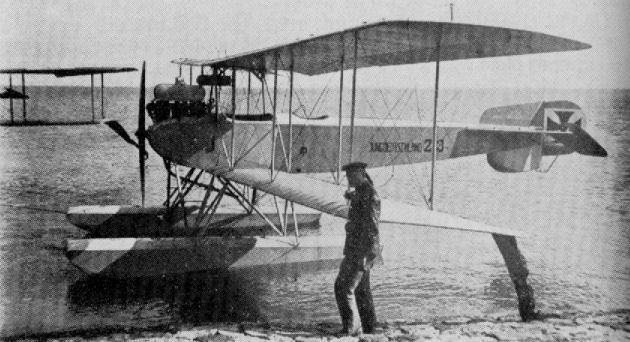Wingspan 16 m | Length 10 m | |
 | ||
Manufacturer Flugzeugbau Friedrichshafen | ||
The Friedrichshafen FF.29 was a German lightweight two-seat floatplane of the 1910s produced by Flugzeugbau Friedrichshafen.
Contents
Development and design
The FF.29 was designed as a lightweight floatplane, a biplane powered by a Mercedes D.II inline piston engine.
Operational history
The FF.29 entered service with the German Imperial Navy in November 1914, it was used for coastal patrol and reconnaissance and had the ability to carry a small load of bombs. On 24 December 1914 an FF.29 was the first aircraft to drop a bomb on British soil, a single bomb landed in the garden of a house in Leyburn Road, Dover. There were no injuries and little damage beyond a crater in the lawn and smashed windows. On 15 January 1915 a FF.29 was the first plane to be launched from a submarine, the SM U-12.
Variants
Operators
Specifications (FF.29)
General characteristics
Performance
